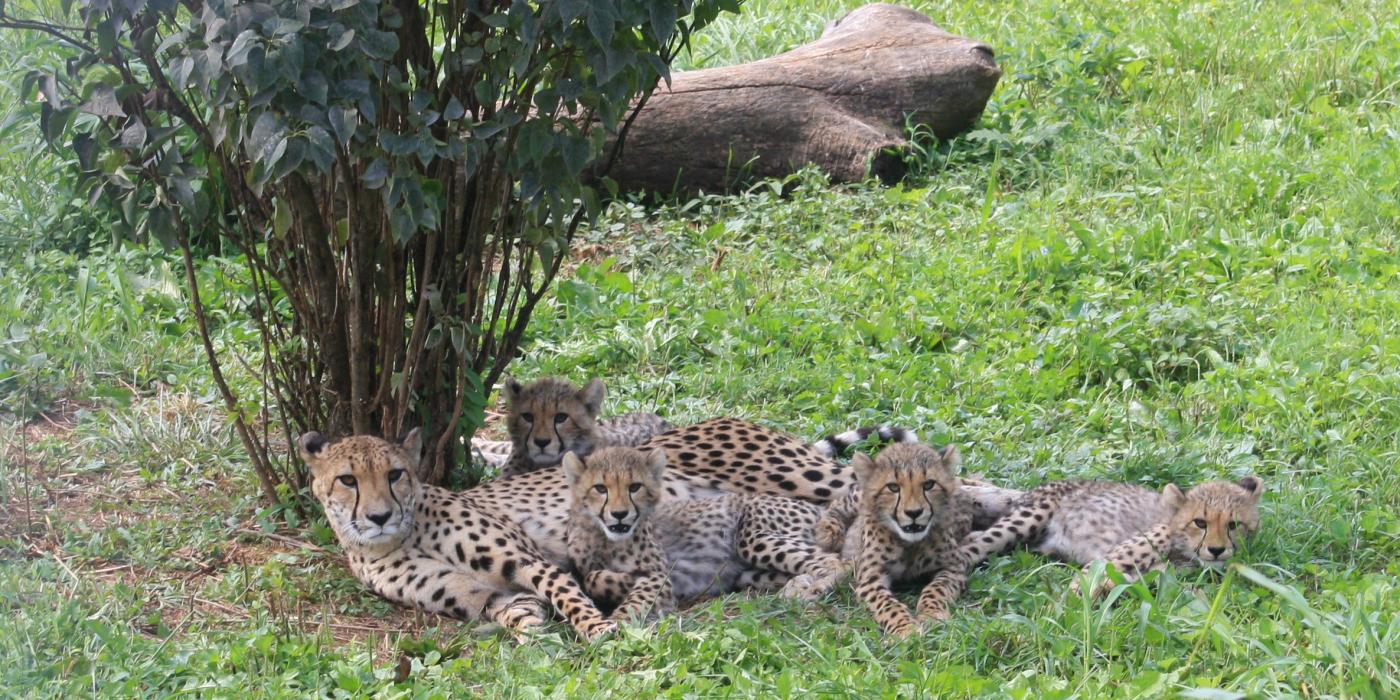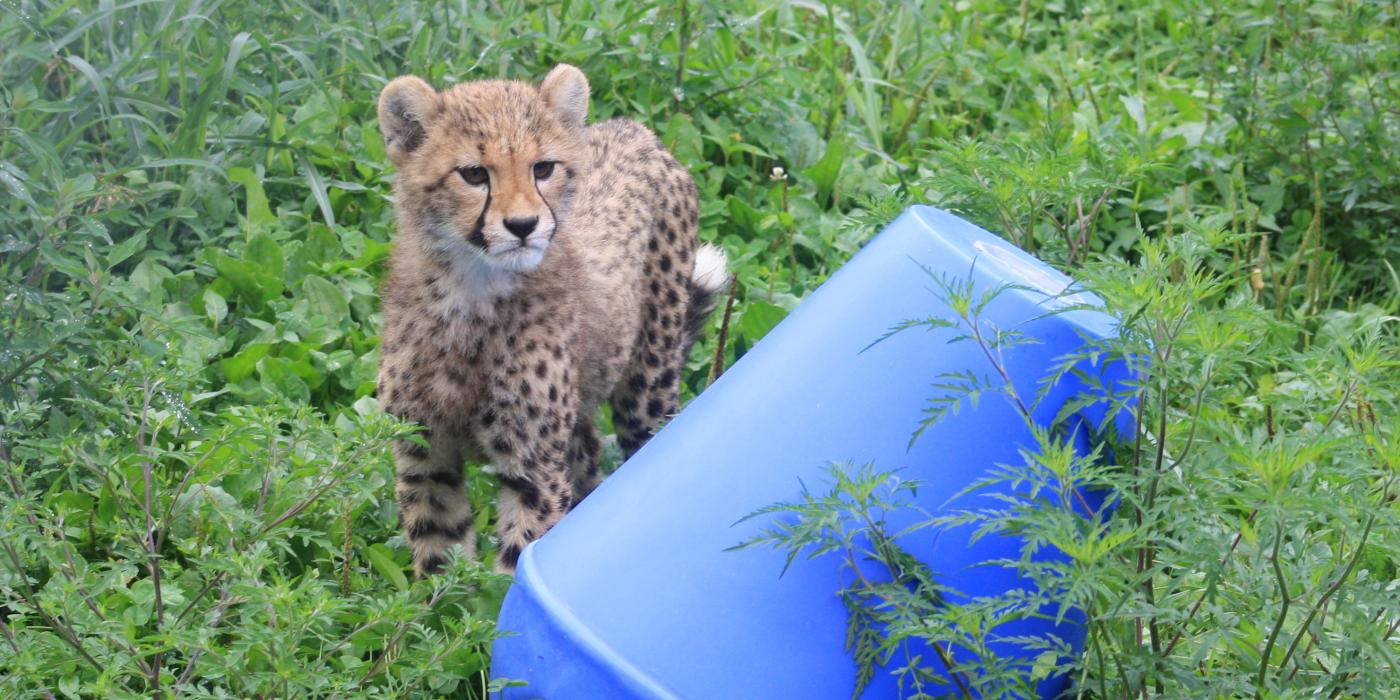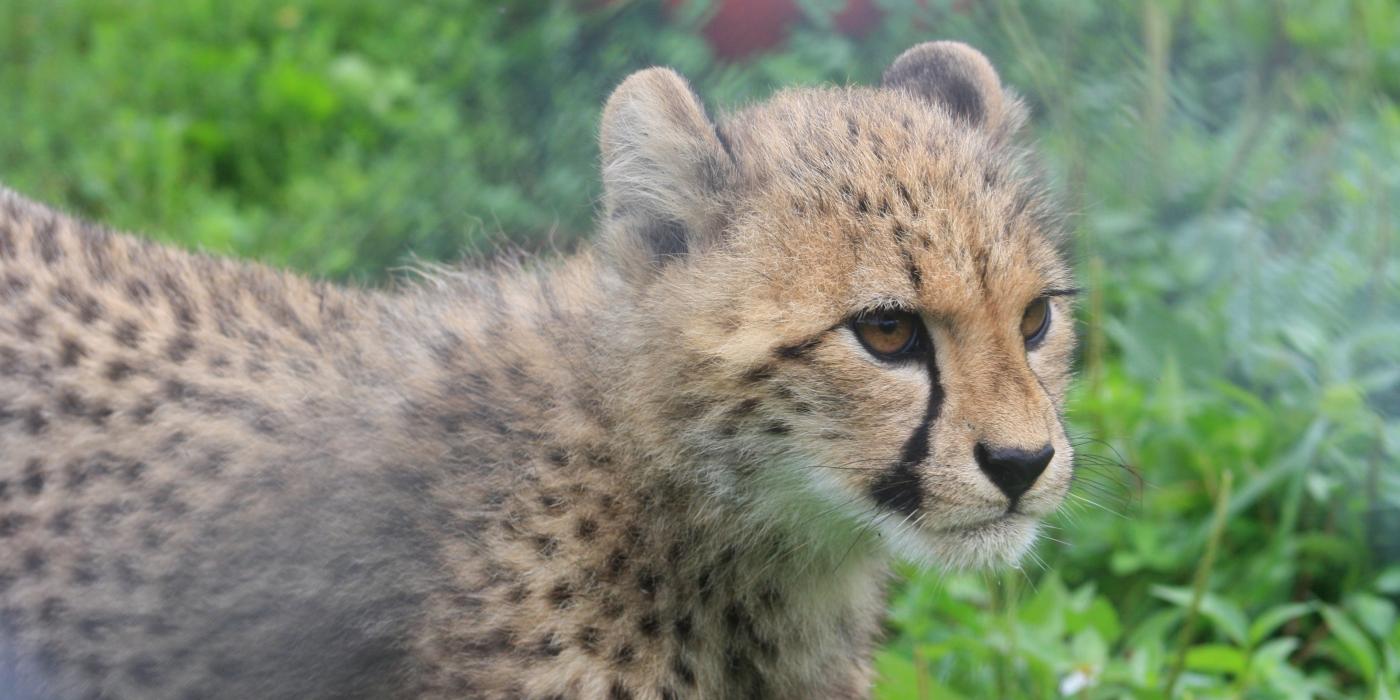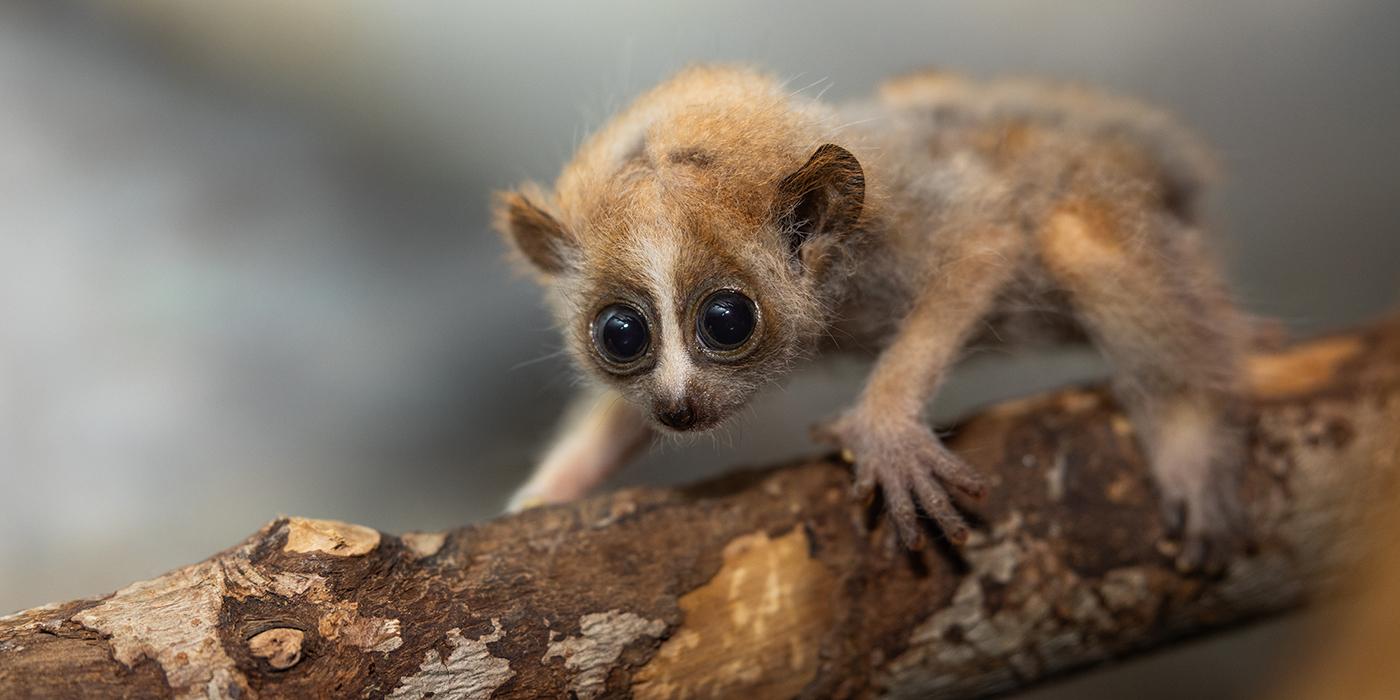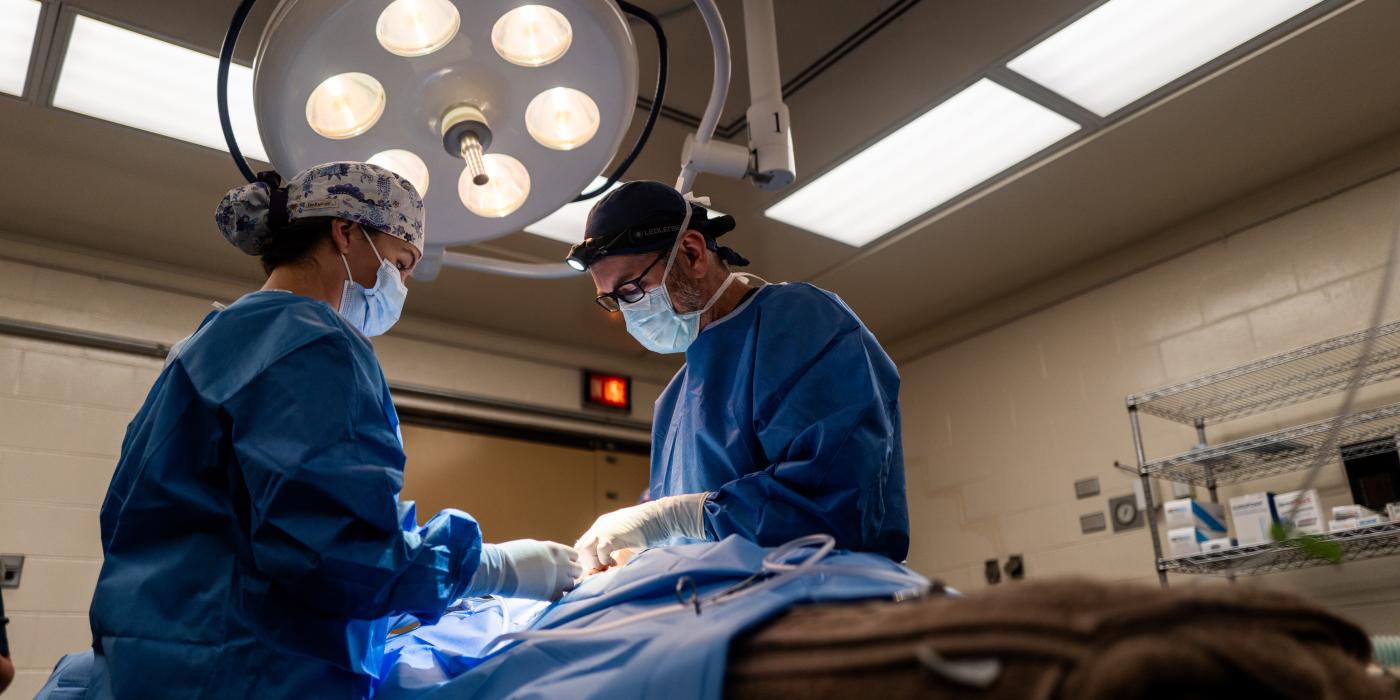Cheetah Cubdate #12: Catching Up with the Cubs
Mothers are not only our first friends, they are also our first teachers. In August, our wonderful cheetah mother Echo was busy teaching her 4.5-month-old cubs—female Amabala and males Jabari, Hasani and Erindi—how to stutter. This staccato vocalization is used by family members to communicate with one another. Often, mothers will use this vocalization when they want their cubs to either stay put or follow them. Take a listen in this video. It sounds like the “coo” of a pigeon.
Unlike other big cats, cheetahs do not roar. Instead, they communicate with purrs, barks, growls, hisses and chirps—the other vocalization heard in the video above. Back in 2001, Smithsonian’s National Zoo scientists studied cheetah vocalizations and found that individuals’ chirps have slight variations. This may help cheetahs identify one another just by the vocalizations they make. You may remember that Echo used a combination of stutters and chirps to encourage her cubs to try meat for the first time. Here’s a look back at that momentous milestone from May 27.
Speaking of food firsts—the cubs received their first bones Aug. 14. As we have mentioned in previous updates, carcass feedings such as this are an important component of our nutrition and enrichment programs. They are beneficial to both the cats’ digestive tracts and help strengthen their jaw muscles.
As we mentioned in our last update, we use positive reinforcement training to encourage the cheetah cubs to voluntarily participate in their own healthcare. By offering the cubs a food reward (beef blood) every time they do the correct behavior asked of them, we make the experience a positive one for them and build their trust in us. We are happy to report that we had a training breakthrough last week, and our team was able to apply flea and tick medication to all four cubs successfully Aug. 27!
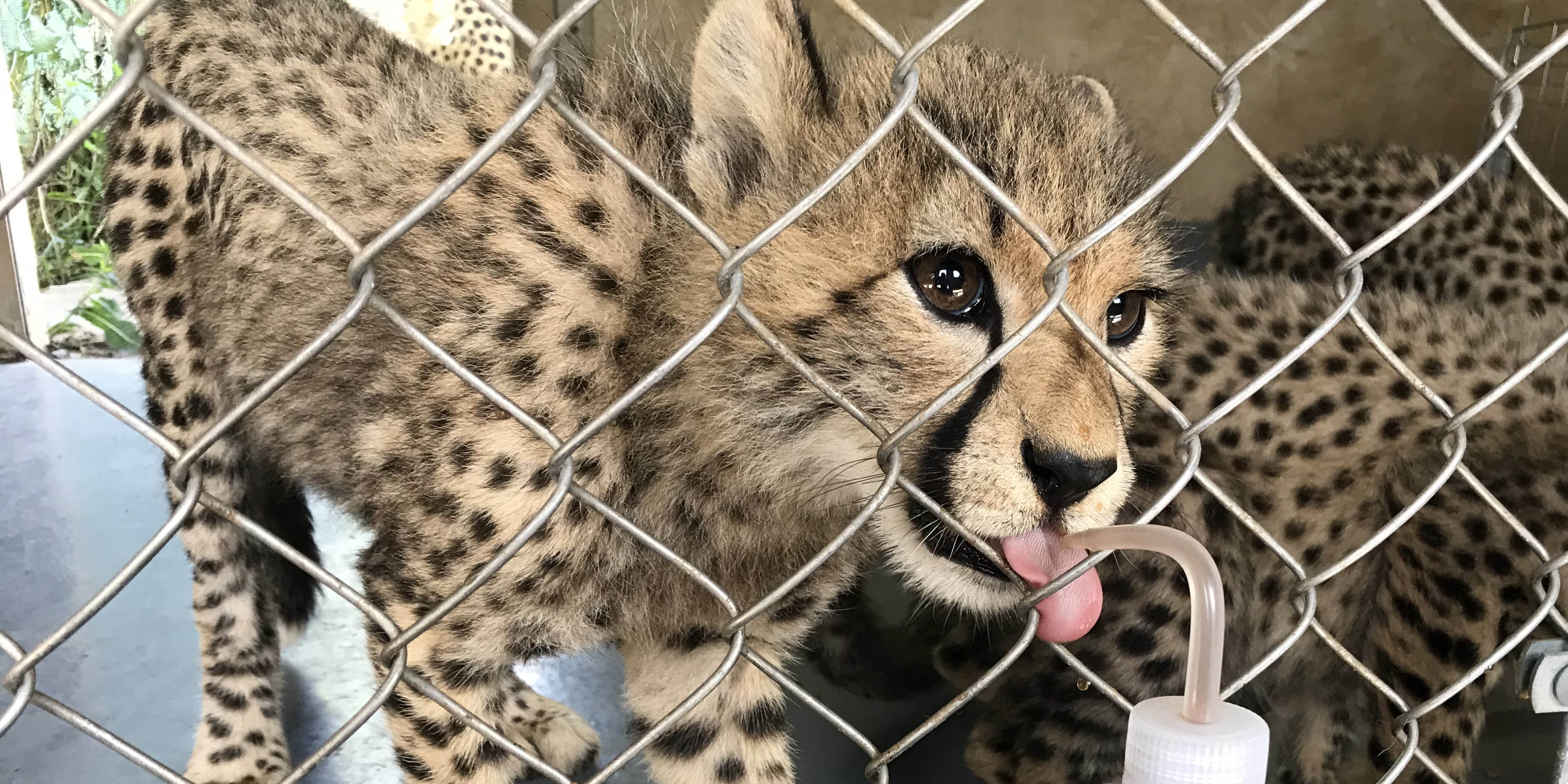
Looking ahead, we are hoping to get the cubs comfortable with lining up against the mesh in their indoor enclosure. This will enable us to refresh their identifying shave marks while they eat their daily diet of ground beef.
Love cheetahs? Read previous updates on the cubs here and check them out on the Cheetah Cub Cam!
Related Species:

